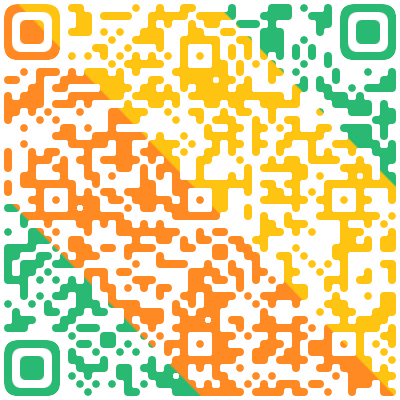根据以下材料,回答问题。
Come on--Everybody's doing it. That whispered message, half invitation and halfforcing,is what most of us think of when we hear the words peer pressure. Itusually leads to no good--drinking, drugs and casual sex, But in her new bookJoin the Club, Tina Rosenberg contends that peer pressure can also be apositive force through what she calls the social cure, in which organizationsand officials use the power of group dynamics to help individuals improve theirlives and possibly the world.
Rosenberg,the recipient of a Pulitzer Prize, offers a host of examples of the social curein action: In South Carolina, a state-sponsored antismoking program called RageAgainst the Haze sets out to make cigarettes uncool. In South Africa, an HIV-preventioninitiative known as LoveLife recruits young people to promote safe sex amongtheir peers.
The ideaseems promising, and Rosenberg is a perceptive observer. Her critique of the lamenessof many public-health campaigns is spot-on: they fail to mobilize peer pressurefor healthy habits, and they demonstrate a seriously flawed understanding ofpsychology. "Dare to be different,please don't smoke!" pleads onebillboard campaign aimed at reducing smoking among teenagers--teenagers, whodesire nothing more than fitting in. Rosenberg argues convincingly thatpublic-health advocates ought to take a page from advertisers, so skilled atapplying peer pressure.
But onthe general effectiveness of the social cure, Rosenberg is less persuasive.Join the Club is filled with too much irrelevant details and not enoughexploration of the social and biological factors that make peer pressure sopowerful. The most glaring flaw of the social cure as its presented here isthat it doesn't work very well for very long. Rage Against the Haze failed oncestate funding was cut. Evidence that the LoveLife program produces lastingchanges is limited and mixed.
There'sno doubt that our peer groups exert enormous influence on our behavior. An emergingbody of research shows that positive health habits--as well as negativeones--spread through networks of friends via social communication. This is asubtle form of peer pressure: we unconsciously imitate the behavior we seeevery day.
Far lesscertain, however, is how successfully experts and bureaucrats can select ourpeer groups and steer their activities in virtuous directions. It's like theteacher who breaks up the troublemakers in the back row by pairing them withbetter-behaved classmates. The tactic never really works. And that's theproblem with a social cure engineered from the outside: in the real world, asin school, we insist on choosing our own friends.
Come on--Everybody's doing it. That whispered message, half invitation and halfforcing,is what most of us think of when we hear the words peer pressure. Itusually leads to no good--drinking, drugs and casual sex, But in her new bookJoin the Club, Tina Rosenberg contends that peer pressure can also be apositive force through what she calls the social cure, in which organizationsand officials use the power of group dynamics to help individuals improve theirlives and possibly the world.
Rosenberg,the recipient of a Pulitzer Prize, offers a host of examples of the social curein action: In South Carolina, a state-sponsored antismoking program called RageAgainst the Haze sets out to make cigarettes uncool. In South Africa, an HIV-preventioninitiative known as LoveLife recruits young people to promote safe sex amongtheir peers.
The ideaseems promising, and Rosenberg is a perceptive observer. Her critique of the lamenessof many public-health campaigns is spot-on: they fail to mobilize peer pressurefor healthy habits, and they demonstrate a seriously flawed understanding ofpsychology. "Dare to be different,please don't smoke!" pleads onebillboard campaign aimed at reducing smoking among teenagers--teenagers, whodesire nothing more than fitting in. Rosenberg argues convincingly thatpublic-health advocates ought to take a page from advertisers, so skilled atapplying peer pressure.
But onthe general effectiveness of the social cure, Rosenberg is less persuasive.Join the Club is filled with too much irrelevant details and not enoughexploration of the social and biological factors that make peer pressure sopowerful. The most glaring flaw of the social cure as its presented here isthat it doesn't work very well for very long. Rage Against the Haze failed oncestate funding was cut. Evidence that the LoveLife program produces lastingchanges is limited and mixed.
There'sno doubt that our peer groups exert enormous influence on our behavior. An emergingbody of research shows that positive health habits--as well as negativeones--spread through networks of friends via social communication. This is asubtle form of peer pressure: we unconsciously imitate the behavior we seeevery day.
Far lesscertain, however, is how successfully experts and bureaucrats can select ourpeer groups and steer their activities in virtuous directions. It's like theteacher who breaks up the troublemakers in the back row by pairing them withbetter-behaved classmates. The tactic never really works. And that's theproblem with a social cure engineered from the outside: in the real world, asin school, we insist on choosing our own friends.
Paragraph 5 shows that our imitation of behaviors_______.
A. is harmful to our networks of friends
B. will mislead behavioral studies
C. occurs without our realizing it
D. can produce negative health habits
查看答案
相关试题
换一换


Paragraph 5()
A.Kinds of intelligence B.Definition of IQ C.Importance of EQ D.Definition of EQ E.Development of EQ studies F.Ways to improve EQ skills
答案
Paragraph 5 ().
A.Be enthusiastic B.Know your materials C.Make eye contact D.Know your audience E.Improve gradually F.Dress appropriately
答案
Paragraph 5()
A. Change your shopping habit B. Drive less if possible C. Take fewer air trips D. Use air-conditioning moderately E. Take fewer vacations F. Eat less meat and more in-season foods
答案
In Paragraph 5, the author discusses that ( ).
A.if labor costs continue to grow, it would ripple through the economy B.average wages grow 19 percent from 2005 to 2010 C.foreign enterprises should switch their manufacturing to cheaper sources D.the wage rises over the past 2 decades could be offset by rising production
答案
Part 1(Paragraph 1) the of Google Part 2(Paragraph 2-5) the of Google Part 3(Paragraph 6) the of Google
答案
What is the problem mentioned in Paragraph 5?
A. A lack of fast food. B. A lack of students. C. A lack of equipment. D. A lack of Head Teachers.
答案
The word controversy in Paragraph 5 is closest in meaning to().
A.choice B.control C.argument D.statement
答案
The word eliminate in Paragraph 5 is closest in meaning to()
A.criticize B.remove C.rebuild D.run
答案
In paragraph 5, the word they, in the underlined sentence refers to ______.
A.children B.companies C.vaccines D.experts
答案
The word discriminatory in Paragraph 5 probably means().
A.necessary B.tough C.strict D.unfair
答案
热门试题
The word frailer in Paragraph 5 probably mean()
The word incorporate in Paragraph 5 is closest in meaning to()
The underlined sentence in Paragraph 5 probably means“()”.
the word "it" in line 5 of paragraph 4 refers to().
The word "particulars" underlined in Paragraph 5 refers to the () .
Paragraph 5 shows that our imitation of behaviors_______.
The term “unionization” (Line 1, Paragraph 5) refers to ______.
The phrase come up with in Paragraph 5 probably means()
What does the underlined word“it”refer to in Paragraph 5?
The word "outlawing" in line 5 of the last paragraph means().
The word “progressively” in paragraph 5, line 1 is closest in meaning to ______.
It can be concluded from Paragraph 5 and 6 that Rowling is__________.
What does "faint-hearted" in Paragraph 5 mean?()
Which of the following shows the path of the signals described in Paragraph 5?
What’s the main idea of Paragraph 4-5?
In Paragraph 5, "two-tier system" means some().
How do you understand "keep their eyes on the prize" in Paragraph 5?
(5).? As used in the second sentence of the second paragraph, the word “unique” means ______.
In paragraph 5, Vera Wang is cited as an example to encourage students to__()
What does the underlined word "unique" in paragraph 5 probably mean?



 使用微信扫一扫登录
使用微信扫一扫登录